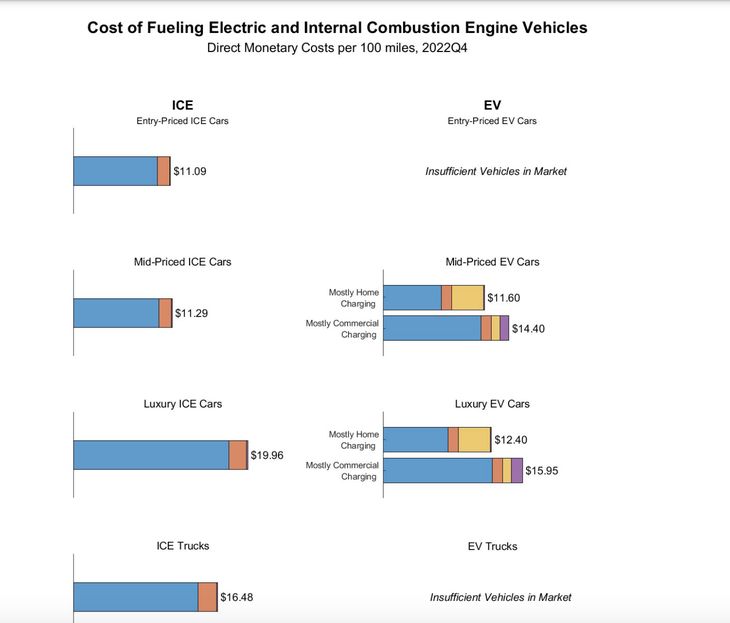The Biden administration is always telling us that the best thing we can do is buy an electric vehicle. In fact, various members of the administration treat it almost flippantly — it’s a no-brainer that you should buy an expensive electric car or two. Doing so will rescue the planet from certain environmental collapse and will save you loads of money, even though the average cost of an electric vehicle was $66,000 as of August of last year.
Plenty of people are falling for it, and it’s easy to see why. The siren song of the tax credit is hard to ignore, and the idea of not having to contend with rising prices at the gas pump is attractive. But is it all true?
To quote Kissy Suzuki in You Only Live Twice, “Think again, please.” It just so happens that, for now, it’s actually cheaper to drive 100 miles in a gas-powered vehicle, also known as an internal combustion engine (ICE), than in an electric vehicle.
Ryan Erik King at Jalopnik reports that “a recent report from the Anderson Economic Group (AEG) found that fueling costs from mid-priced ICE-powered vehicles are lower than similarly priced electric vehicles. Combustion drivers pay about $11.29 per 100 miles on the road. EV drivers who charge up at home spend about $11.60 per 100 miles.”
It gets even more delicious when you take into account those commercial chargers that pop up in a lot of places.
“The price difference is more dramatic for those who mainly recharge at stations,” King writes. “Frequent charging station users pay $14.40 per 100 miles.”According to the report from AEG, the numbers are slightly different depending on the type of vehicle:
• Mid-priced vehicles−In this market segment, fueling ICE vehicles was more economical than comparable EVs in the 4th quarter, regardless of charging primarily at home or commercially.
• Luxury cars−Drivers of high-end electric vehicles still enjoyed a significant fueling cost advantage, but the gap narrowed in Q4. Assuming mostly home charging, the cost benefit to fuel a luxury EV vs. a luxury ICE car dropped from $11.20 per 100 miles to $7.56.
• Pickup trucks, entry-priced cars−ICE vehicles are still the only widely available options in these two segments.

The report considers four factors in the cost to drive 100 miles: the cost of energy (electric, diesel, or gas), state taxes, the cost to operate a gas pump or vehicle charger, and the cost to drive to a public charger, also called “deadhead miles.”
“The run-up in gas prices made EVs look like a bargain during much of 2021 and 2022,” AEG’s Patrick Anderson said in the report. “With electric prices going up and gas prices declining, drivers of traditional ICE vehicles saved a little bit of money in the last quarter of 2022.”
Of course, as gas prices are sure to go up this year, these numbers are likely to change, and driving a gas-powered car could be more expensive. But it’s fascinating and a little schadenfreudelicious that all of those gas-guzzling holdouts out there who haven’t given in to the electric vehicle frenzy have been vindicated, at least for now.
Story cited here.
























